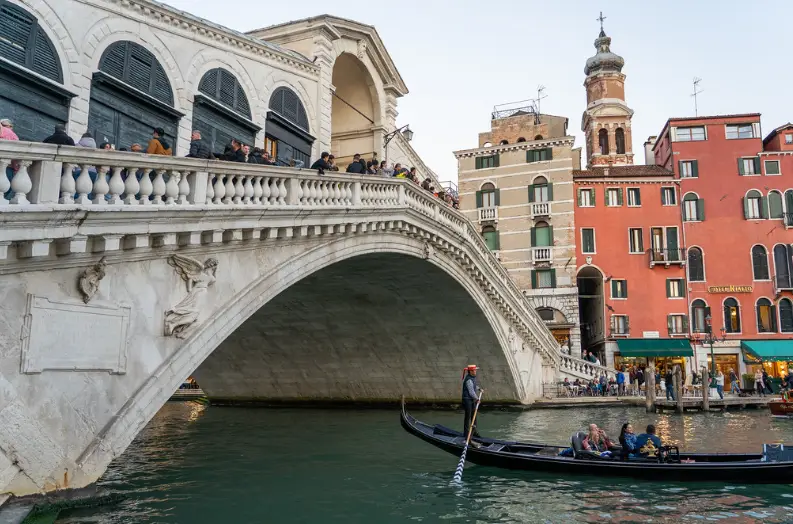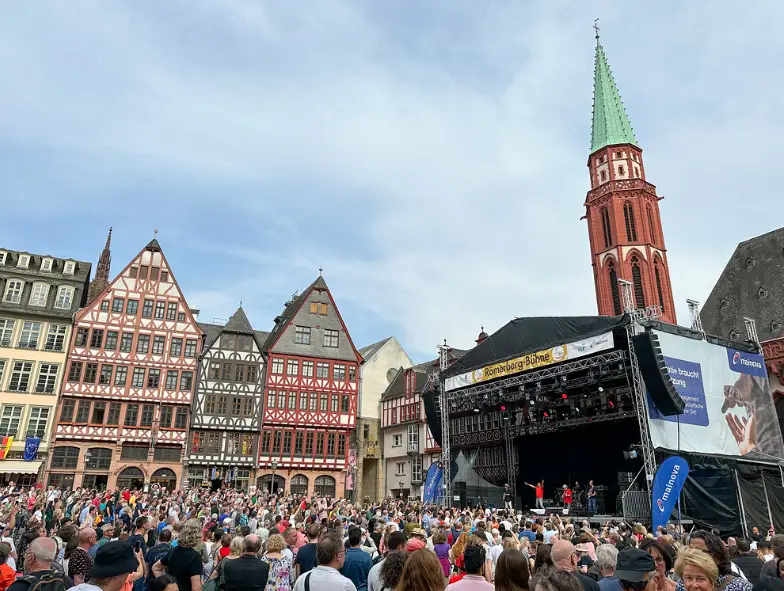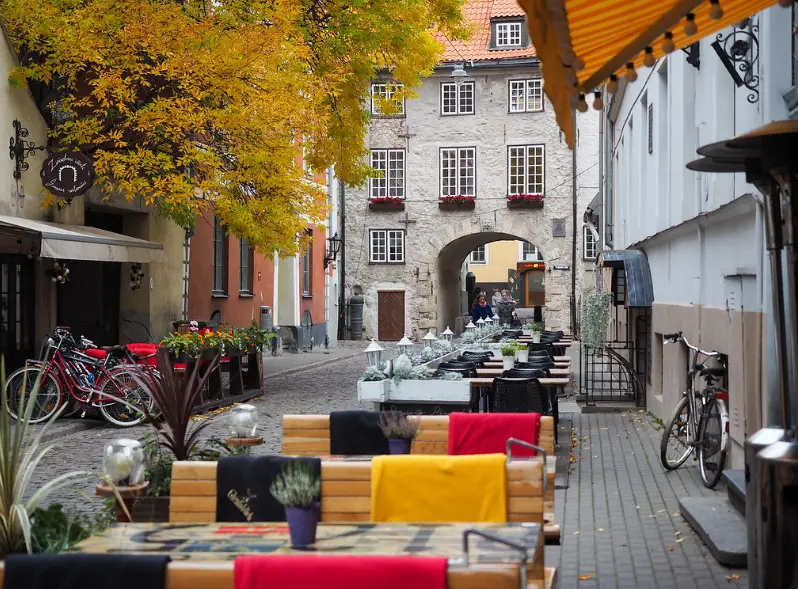Europe is a vast continent, home to 50 diverse countries, each boasting its own unique languages, cultures, and histories. Saying that many people dream of traveling to “Europe” might sound broad, but it’s undeniably true!
The iconic “Euro Trip” — the dream journey to Italy, France, or Ireland — is a genuine aspiration, especially for many Americans who trace their roots back to various parts of Europe.
While I haven’t visited every European country, I’ve explored over 30 of them. With this experience, I’m excited to share some essential travel tips to help make your first trip to Europe unforgettable—in the best way possible!

Table of Contents
Table of Contents
DON’Ts for a Europe trip
I have personally visited over 20 countries in Europe and spent several months—maybe even years—there over the past decade. Here are my top tips and essential insights for planning a major bucket-list trip to Europe.
1. DON’T stress about language barriers
One of the most common questions I receive from readers about traveling to non-English-speaking countries is: did you struggle to communicate?
In some parts of the world, language barriers still exist. I’ve relied on pantomime quite a bit before Google Translate made communication so much easier.
However, in Europe, you rarely need to worry about language barriers. Most Europeans speak excellent English, especially in larger cities. Even in smaller towns or more remote areas where English is less common, you’ll usually find that people working in tourism speak enough English to help you get by.
It’s always thoughtful to learn a few basic polite phrases like “hello” and “thank you” in the local language. But if you try to speak German or French to the average person in Germany or France, they’ll likely switch to English automatically. (And don’t buy into the stereotype that French people are standoffish—greet them with a “Bonjour!” and they’ll appreciate it, even if you then switch to English.)
If you’re worried about a language barrier, make sure to have the native language downloaded in your Google Translate app. You can snap a photo of a menu or road sign for instant translation, or record yourself or someone else speaking for real-time translation. Newer iPhones even offer built-in text translation through the Camera app.
The only times I’ve recently encountered someone who spoke no English at all were usually taxi drivers. In those cases, simply showing them the address is usually enough—no conversation necessary.
RELATED: The 15 Most Famous Landmarks in Croatia | Must-See Attractions in 2025
2. DON’T wait too long to book flights and hotels
The downside of rising travel demand in many European destinations is that the traditional “low season” has all but disappeared. Dreaming of a spontaneous trip to Paris or a crowd-free visit to Rome? Think again.
Unless you’re heading somewhere truly off the beaten path, avoid waiting until the last minute to book your flight, and secure your accommodation well ahead of time.
There’s no perfect booking window for flights, but aim to reserve tickets at least two months in advance. When traveling during peak season or around special events, book your hotels as soon as your plans are set—opt for options with free cancellation if you want flexibility.
I’ve learned the hard way that waiting too long to book hotels only adds stress. For example, planning a summer road trip in Iceland? With limited hotel options outside Reykjavik, many accommodations fill up months ahead!
3. DON’T eat near big tourist attractions
When dining out, you’ve likely heard this advice before: avoid restaurants located right next to major tourist attractions.
This means steering clear of eateries around St. Mark’s Square in Venice, those near the Eiffel Tower in Paris, spots surrounding Praça do Comércio in Lisbon, and along La Rambla in Barcelona, among others.
Restaurants in the busiest tourist areas tend to cater primarily to visitors. The food often lacks authenticity and quality, prices are inflated, and service can be subpar. Instead, venture a street or two away from these hotspots for far better dining experiences.
Additionally, I avoid places in crowded areas with large picture menus displayed outside or staff aggressively inviting you in. These establishments are almost always designed to attract tourists rather than offer genuine local cuisine.
4. DON’T be surprised by restaurant differences

Dining at restaurants in Europe offers a distinctly different experience compared to places like the United States. In the US, servers depend heavily on tips and provide very attentive, hands-on service. Plus, you often receive complimentary extras that are rare in Europe.
Here are some key differences you might encounter while dining out in Europe:
- Water may come with a charge – In many European restaurants, you’ll be asked if you prefer still or sparkling water. Choosing either usually means you’ll receive a bottled water that appears on your bill. If you want free water, you’ll need to specifically request tap water, which is safe to drink across Europe.
- No free refills – When you order a soda or other soft drink, it’s typically served in a bottle rather than from a fountain. Fountain drinks and free refills are uncommon in sit-down European restaurants. Want another Coke? You’ll have to pay for a new one. Be aware that iced tea and lemonade aren’t as common either.
- Ice is rare – Europeans generally don’t serve drinks with ice. Additionally, beer is often served at room temperature, which can be surprising for beer enthusiasts used to chilled pints.
- Servers might not check on you – Since servers in many European countries earn a living wage and tipping is minimal or not expected, service style differs. Your server might not come by frequently after delivering your meal, which some interpret as less attentive, but it’s simply a cultural norm.
- You’ll need to ask for the check – Meals in countries like France, Greece, and Spain are meant to be leisurely affairs. Staff won’t rush you, so when you’re ready to leave, you’ll need to signal your server and request the bill. If you’re paying by card, they’ll bring the terminal to your table.
Overall, dining out in Europe tends to be a more relaxed, unhurried experience without the pressure to tip heavily or feel rushed through your meal.
5. DON’T carry too much cash
The best way to avoid being robbed is to avoid carrying flashy valuables or large amounts of cash when you’re out and about. Simply put, no one can steal what you don’t have on you. (And remember, you usually don’t need to carry your passport around in Europe!)
Moreover, many countries in Europe—especially in Western Europe and Scandinavia—are moving toward almost cashless societies. For example, you can use contactless payment on the London Tube, and in places like Iceland, Norway, Sweden, and Finland, many shops and services explicitly state “no cash” or “credit/contactless only” at checkout.

While carrying a small amount of cash can be handy for buying a soda or a handmade souvenir at a local market, credit and contactless cards dominate most transactions throughout much of Europe*.
*That said, this trend isn’t universal yet. In smaller towns, such as those in Slovenia last summer, cash was still the preferred method of payment. Be sure to research your destination ahead of time.
6. DON’T expect to pee for free
I already mentioned that you won’t get free water or drink refills—but don’t expect to use public restrooms for free in Europe either!
Inside restaurants or museums, access to toilets is usually free. However, public restrooms—such as those in train stations or near tourist attractions—often require a small fee in many European countries. The upside is that these paid restrooms* tend to be cleaner and better maintained than public restrooms in places like the US.
The fee is typically under 1 Euro and can generally be paid with coins, although contactless payment options have become more common in recent years.

*Note that the term “restroom” is not used in Europe. “Toilet” is universally understood, and signs marked “WC” (short for “water closet”) also indicate a restroom.
7. DON’T forget your travel adapters
Europe uses different wall plugs and electrical voltages compared to North America.
First, you’ll need an adapter for the wall outlets to charge your devices. Mainland Europe uses different plugs than Ireland and the UK, so keep that in mind if you’re visiting cities like London or Dublin as well as destinations on the continent.
I usually travel with a universal adapter like this one, but you can also find region-specific adapters that are more compact.

You generally don’t need a voltage converter for typical electronics such as cell phones, cameras, laptops, and Kindles, since most chargers support multiple voltages. However, if you’re bringing heat-producing tools like hair dryers or curling irons, you do need to pay attention to voltage differences. I recommend purchasing dual-voltage versions of these tools to avoid blowing fuses in hotel rooms that use 220-250V.
8. DON’T just visit in summer
I know “spending the summer in Europe” has become such a travel cliché, but you don’t have to visit Europe only in summer! In fact, some of my favorite trips have been in every season except summer.
I love exploring places like Ireland and Scotland in spring and autumn; Greek island hopping in October was wonderfully relaxed; and winter in Norway is truly magical. (Plus… Christmas markets, everyone!)
Unless school or work schedules require you to travel between late June and August, I highly recommend avoiding those months in most of Europe. Shoulder season travel is my absolute favorite, especially across Europe!
DOs for a Europe trip
Drawing from my own European adventures, here are the essential DOs that made the journey unforgettable – must-try local foods, hidden cultural gems to discover, and savvy habits that saved me time and eased stress.
RELATED: The 15 Most Famous Landmarks in Croatia | Must-See Attractions in 2025
1. DO book attractions/restaurants in advance
Booking in advance is crucial for day tours, museum tickets, and dining at popular restaurants. Many museums implemented pre-booked, timed entry during COVID and have maintained this system to prevent long lines and overcrowding.
If there are specific activities you want to experience on your trip, be sure to secure your tickets early. This applies to tours—I recommend GetYourGuide for day and walking tours in Europe—as well as many museums and attractions.
Most museum tickets can be purchased a day or two before your visit, except for iconic sites like The Louvre, which require booking weeks in advance. Popular tours, such as Vatican tours or day trips to Versailles, should be reserved well ahead of time. For the Blue Lagoon in Iceland, it’s best to book at least a month in advance.
In some cities, making restaurant reservations ahead of time is highly recommended. For instance, in Paris, booking dinner at a sit-down restaurant is almost essential. TheFork app is a convenient tool to simplify the reservation process.
2. DO be aware of pickpockets
The greatest risk for most tourists traveling to Europe is petty crime, primarily theft through pickpocketing.
Pickpocketing is most common on crowded trains and near popular tourist attractions. Additionally, certain cities have specific scams to watch out for—such as people with clipboards in Paris or men offering flowers at the Trevi Fountain—where theft is the ultimate objective.

Stay alert, avoid keeping your wallet in your back pocket, and research common scams in the cities you plan to visit so you know what to watch for.
I also highly recommend using theft-proof purses and backpacks—I’m a devoted Pacsafe fan! These anti-theft bags can provide extra peace of mind. (This anti-theft purse and this theft-proof backpack are excellent choices.)
3. DO try to use public transport
Unlike many US cities, European cities boast extensive and efficient public transportation systems. In cities like London, Paris, Rome, Dublin, Berlin, Oslo, Budapest, and Madrid, owning a car is often unnecessary. Taking the metro, tram, or bus is usually faster and more affordable than hailing a taxi or Uber.
Moreover, public transit is far more environmentally friendly than driving a car.
If you’re not accustomed to using public transport, it might seem intimidating at first. However, most European cities offer user-friendly smartphone apps and contactless payment options to simplify the experience. You can also rely on Google Maps for clear, step-by-step directions from Point A to Point B using public transit.
Give it a try at least once—you might find it much easier and more convenient than you expected!
And if you’re visiting places like Sweden, don’t miss the Stockholm metro stations, which are attractions in their own right!
4. DO prepare to do a ton of walking
Since you’ll be exploring many sights and possibly using public transit, you’ll likely spend a lot of time on your feet in Europe. Comfortable shoes are essential. (No exaggeration—walking 20,000+ steps a day in a European city is completely normal!)
The “best” shoes for Europe vary from person to person—just be sure to bring pairs that feel comfortable for you!
RELATED: The 15 Most Famous Landmarks in Croatia | Must-See Attractions in 2025
5. DO try to pack light
Keep in mind that many European cities are historic, featuring cobblestone streets, stairs, and buildings that often lack modern accessibility due to their age.
Because of this, if you’ll be handling your luggage frequently on your own, it’s wise to pack light.
Navigating trains with suitcases, rolling bags over uneven cobblestones, and hauling them up narrow hotel staircases—since elevators are not always available in older buildings—are just a few reasons why smaller bags are more practical in Europe. Additionally, cars tend to be smaller, so if you plan to take a road trip, large suitcases can quickly fill up the trunk space.

Unless your trip requires special outfits for various occasions, avoid overpacking. Master the art of the capsule wardrobe—select versatile pieces that mix and match effortlessly. Remember, you can wear outfits multiple times without anyone noticing.
If necessary, you can also do laundry during your travels. I always pack a small amount of detergent for quick sink washes.
6. DO get an eSIM
WiFi is now widely accessible across Europe, available in hotels, cafes, and in some countries, even in museums, buses, and public spaces like parks.
Many US mobile providers, such as Verizon and AT&T, offer international plans, typically around $10 per day for a fixed amount of data.
If you want to avoid relying on free WiFi or paying daily fees for data, consider using a country- or region-specific eSIM for your phone. Most modern smartphones support eSIMs, which are virtual SIM cards that connect you to local mobile networks while traveling.
I’ve used Airalo’s eSIMs in several European countries and found them easy to install and use. You select the data amount upfront, giving you better control over your spending. If you mostly use WiFi, you might spend less than $10 on data for your entire trip!
7. DO manage your expectations
Last summer, a TikTok trend emerged where people visited famous social media destinations in Europe, like Positano, and posted “Instagram vs. Reality” videos. These clips suggested viewers had been misled into thinking these tourist hotspots weren’t as crowded as they actually are.
Here’s the truth: Popular European destinations are popular for a reason. If you visit during peak season, expect crowds!
When heading to small yet highly sought-after places such as Positano, the Cinque Terre in Italy, Santorini in Greece, or Dubrovnik in Croatia, remember you won’t be the only one with the idea to visit. It’s important to set realistic expectations when exploring Europe’s most iconic spots.
RELATED: The 15 Most Famous Landmarks in Croatia | Must-See Attractions in 2025
While this isn’t an exhaustive list of Europe travel tips, it’s a great starting point to help you prepare for an unforgettable European adventure.
For more about my personal journeys across Europe, check out my Destinations page, where you’ll find a complete list of the countries I’ve explored.
What questions have you had about traveling to Europe? If you’ve already been, what were some surprises you encountered along the way?
